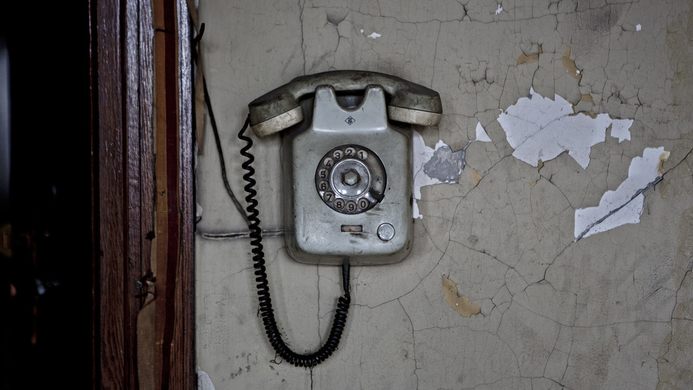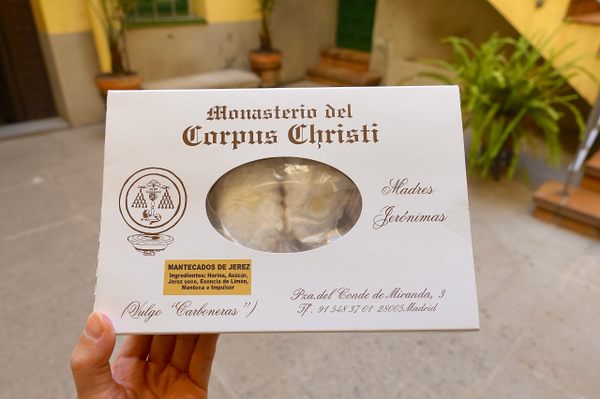Secret Apartment in the Fort Washington Library
This abandoned caretaker's apartment is one of 13 left in the New York Public Library system.
The downstairs of the Fort Washington branch of the New York Public Library feels big and bright, with tall ceilings and sweeping windows meant to keep the building light and cool. The bottom two floors is an open, book-lined space. Walking up that last flight, however, feels like fading into a different building. A water stain darkens the wall, and the etched steps are dusted with the chips of peeled paint fallen like dandruff from above.
At the top, the stairway opens into a large, shabby room with high ceilings. To enter, you pass through a well-crafted wooden frame of what was once a wall; now there is empty space where the door and windows were. The front room is brown and full of the textures of abandonment—the walls and ceiling look like they’re sloughing off dead skin. Once, the library hosted performances in this space, and dances, but now the prettily molded ceiling is covered partway with rectangular metal chutes.
When New York City’s branch libraries were first built, about a century ago, they needed people to take care of them. Andrew Carnegie had given New York $5.2 million, worth well over $100 million today, to create a city-wide system of library branches, and these buildings, the Carnegie libraries, were heated by coal. Each had a custodian, who was tasked with keeping those fires burning and who lived in the library, often with his family.
But since the ’70s and ’80s, when the coal furnaces started being upgraded and library custodians began retiring, those apartments have been emptying out, and the idyll of living in a library has disappeared. Many of the apartments have vanished, too, absorbed, through renovations for more modern uses, back into the buildings. Today there are just 13 library apartments left in the New York Public Library system. Some have spent decades empty and neglected.
The apartment doesn’t feel haunted, exactly, but lonely and left behind. There is, however, a mysterious black door, with three sections, and a row of bells alongside it. No one knows where it leads, and it’s jammed shut. It’s the sort of door someone opens at the beginning of a horror movie that releases a demon or hungry creature.
Wrenched open, the middle section reveals a wall, brown and textured like washed-up seaweed. It’s the back of a shaft. Look up, and there’s a plate of glass keeping the rain out. Look down, and the hole plummets to the basement.
Death chute aside, this would have been one of the nicer library apartments to live in. Often the flourishes that made the Carnegie libraries special—the large windows and decorative moulding—were left out of the custodial apartments, but this one has some nice details. Finding this much empty space anywhere in Manhattan is a rarity; walking upstairs in a well-used building and finding an empty floor feels like being in on a great secret.
Know Before You Go
Please note that the apartment is not open to the public and not accepting visitors. However, the library itself very much is!



























Follow us on Twitter to get the latest on the world's hidden wonders.
Like us on Facebook to get the latest on the world's hidden wonders.
Follow us on Twitter Like us on Facebook